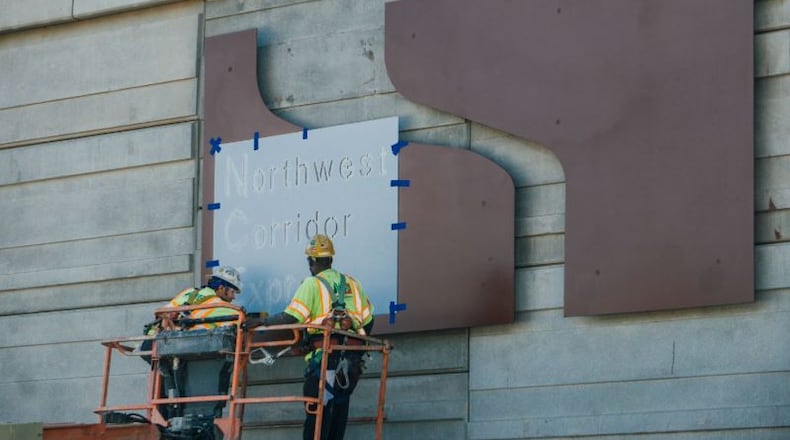The Northwest Corridor Express Lanes on I-75 and I-575 in Cobb and Cherokee counties are open to traffic. We’d love to know what you think.
Are you dying to try them, or have you done it already? Would you not be caught dead in them, even if you were late to your own funeral? Either way, we want to hear from you. If you’re willing to be quoted in an article, contact David Wickert at dwickert@ajc.com.
In the meantime, here’s what you need to know about the new lanes.
What are these lanes? The $834 million Northwest Corridor consists of 30 miles of toll lanes on I-75 and I-575. The lanes are separated from regular traffic. The lanes stretch from Akers Mill Road to Hickory Grove Road on I-75 and from I-75 to Sixes Road on I-575.
From the I-75/285 interchange to the I-75/I575 interchange, there are two elevated lanes. North of the I-75/I-575 split, there is a single lane on each highway separated by concrete barriers and a series of gates.
Who can use them? Motorists with an active, registered Peach Pass, which allows the State Road and Tollway Authority to assess the toll electronically. You can register for a pass here.
The lanes are open only to vehicles with six or fewer wheels – no tractor trailers.
They are free for state-registered transit, law enforcement and emergency response vehicles.
When can I use the lanes? The lanes will be open seven days a week. They are reversible – they will carry traffic into Atlanta in the morning and out of town in the afternoon. They will close for a few hours mid-day to allow the state to safely reverse traffic.
During special events – like holidays – the state will ensure the lanes flow in the direction with the greatest travel demand.
How much does it cost? The lanes are free for the first two weeks (you still need a Peach Pass). The minimum toll on the lanes for most of the day is 10 cents a mile. The toll will rise as traffic gets worse.
There is no maximum toll. But state officials expect the cost to be minimal at first, as the lanes likely be lightly used initially. Over time traffic – and the toll – will rise.
Overnight (roughly midnight to 5 a.m.) the cost is just 50 cents per trip, regardless of the length of the trip.
Why does the toll rise as traffic gets worse? The idea is to keep traffic moving. SRTA wants traffic in the express lanes to average 45 mph. To do that, it raises the toll as traffic gets worse. The idea is to discourage enough people from using the lanes to keep traffic moving at 45 mph.
What's the big idea? The Northwest Corridor Express Lanes are part of a growing network of express lanes – they already exist on I-85 in Gwinnett and DeKalb counties and on I-75 in Clayton and Henry counties. The Georgia Department of Transportation sees them as a key to fighting traffic congestion in metro Atlanta.
The agency says building more "free" lanes is less effective because they tend to fill up as soon as they open. But the state can "manage" express lanes to keep traffic moving – for motorists who are willing to pay the price.
By making the lanes free for transit vehicles, GDOT says it’s also encouraging fewer vehicles on the road – thus alleviating traffic congestion.
Are there other express lanes planned? Yes. An extension of the I-85 lanes will open later this year. In coming years, GDOT plans to build express lanes on Ga. 400 and along the top half of the Perimeter.
Where can I get more information? Visit www.peachpass.com.
About the Author
The Latest
Featured

